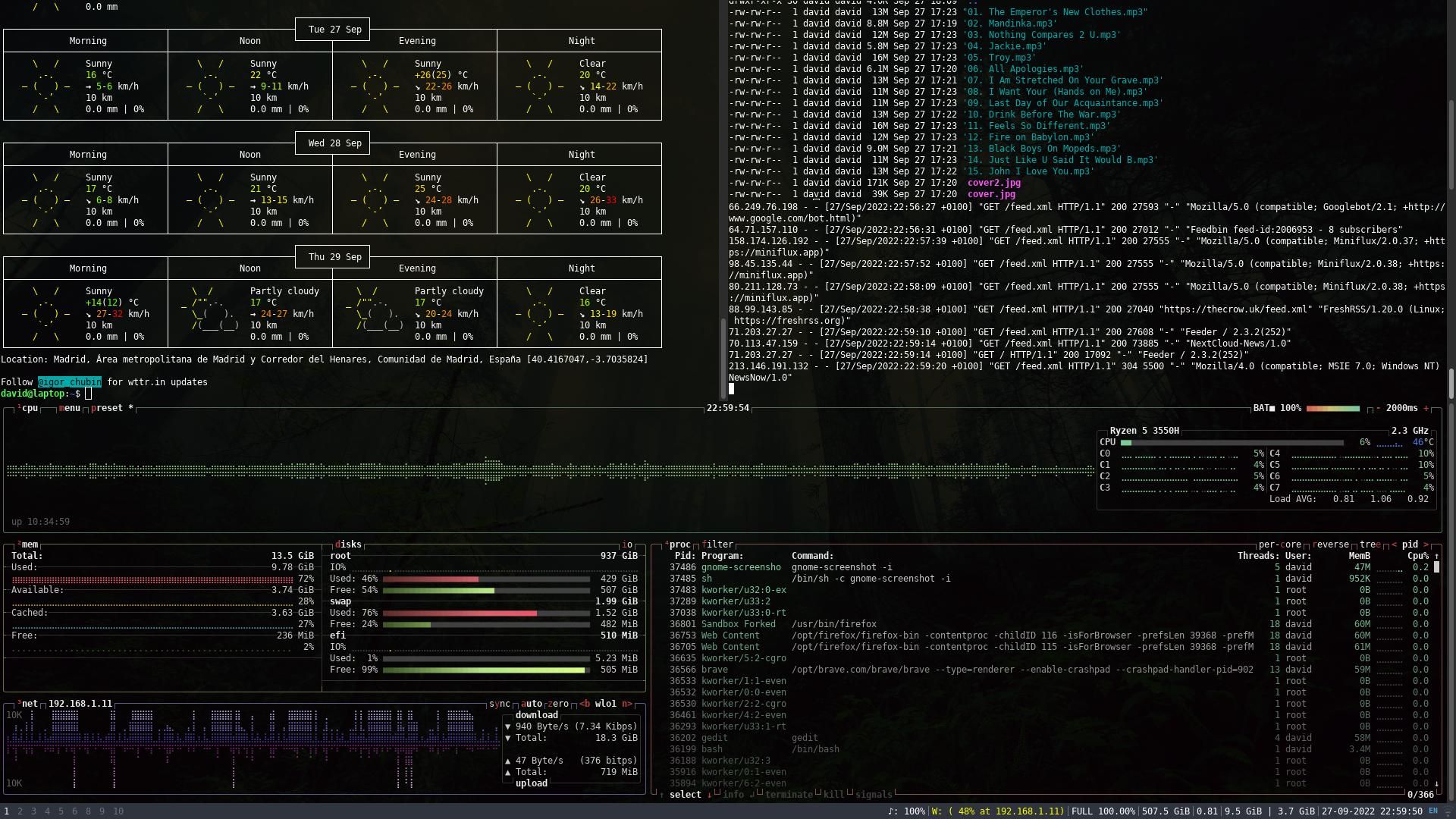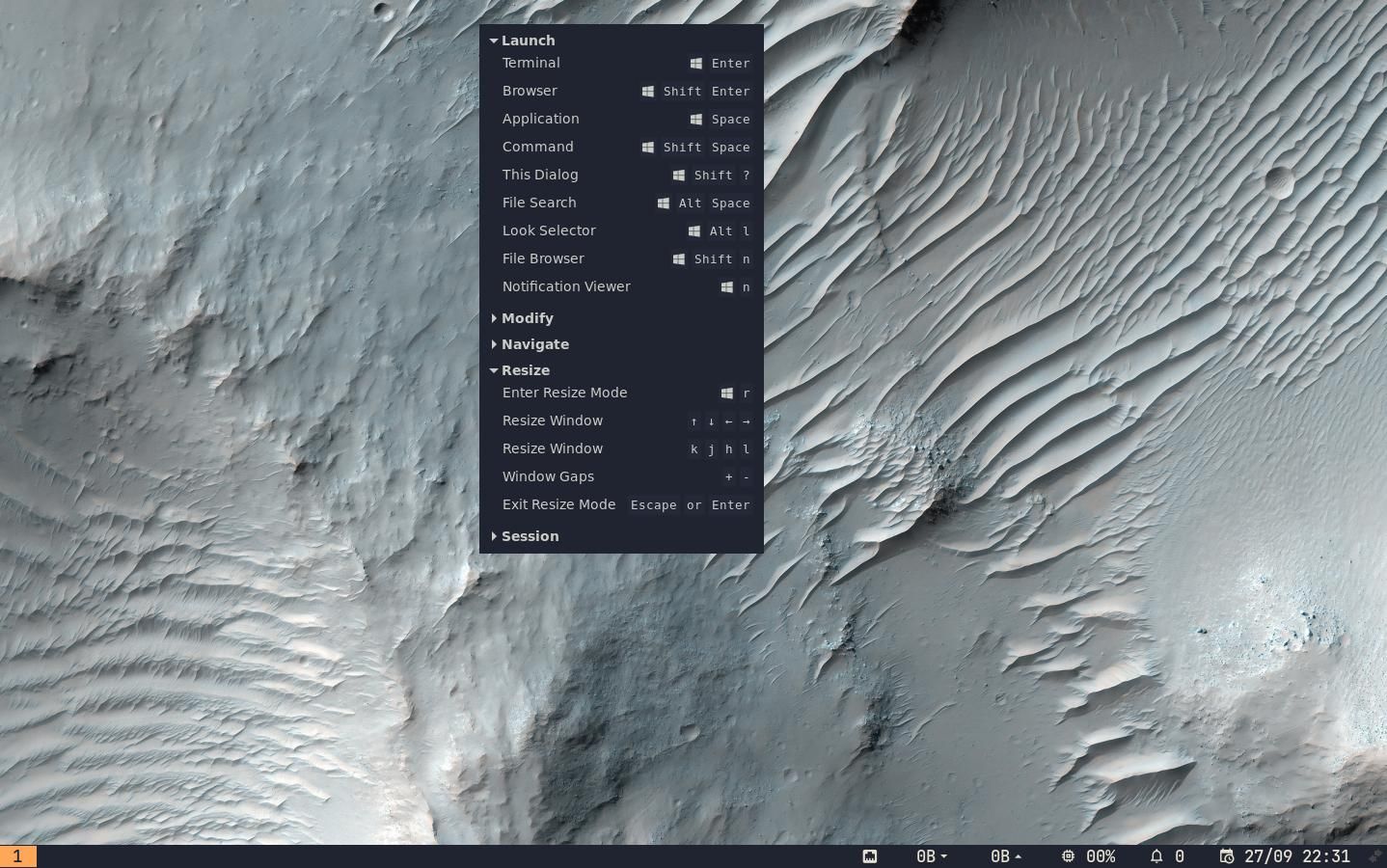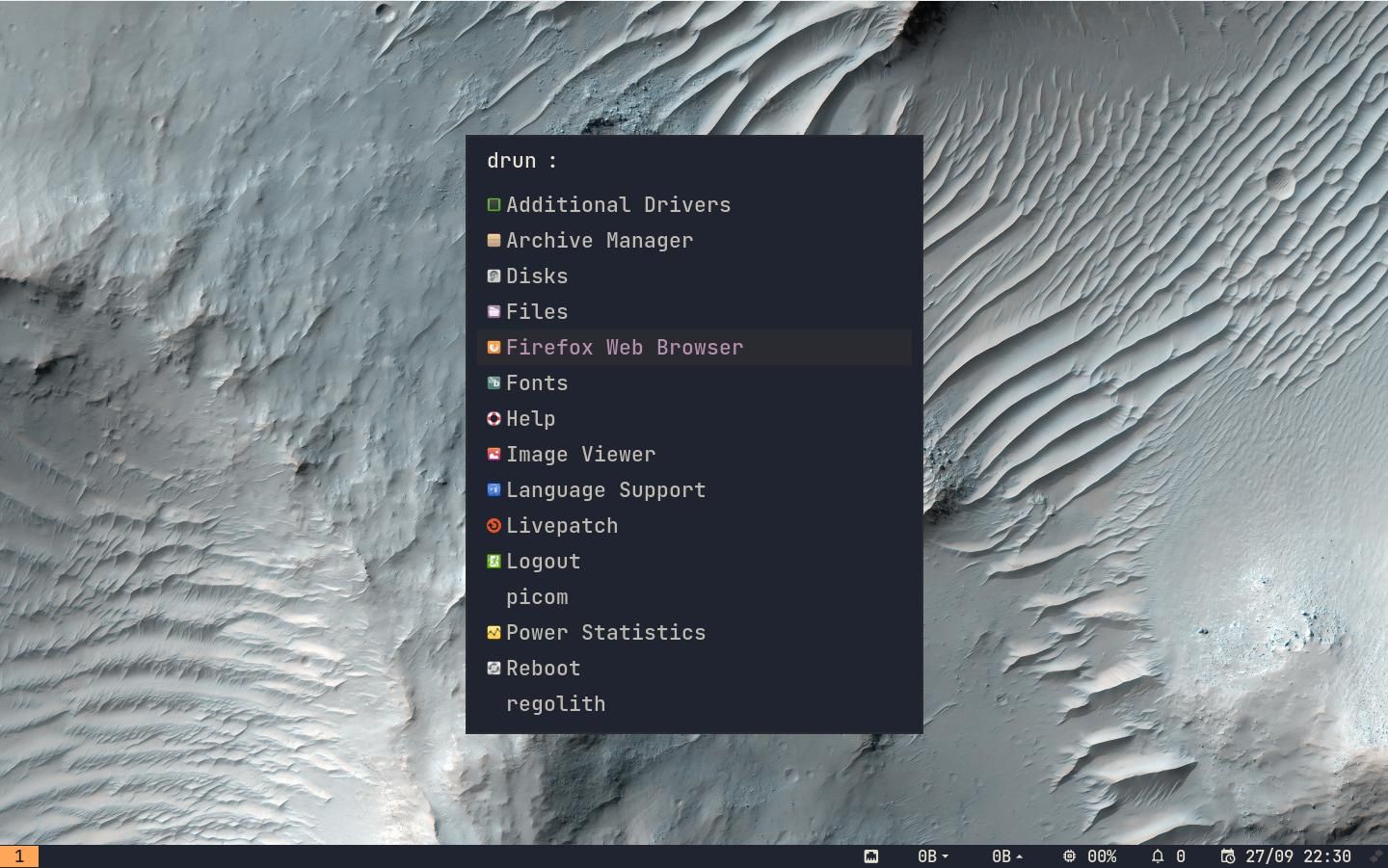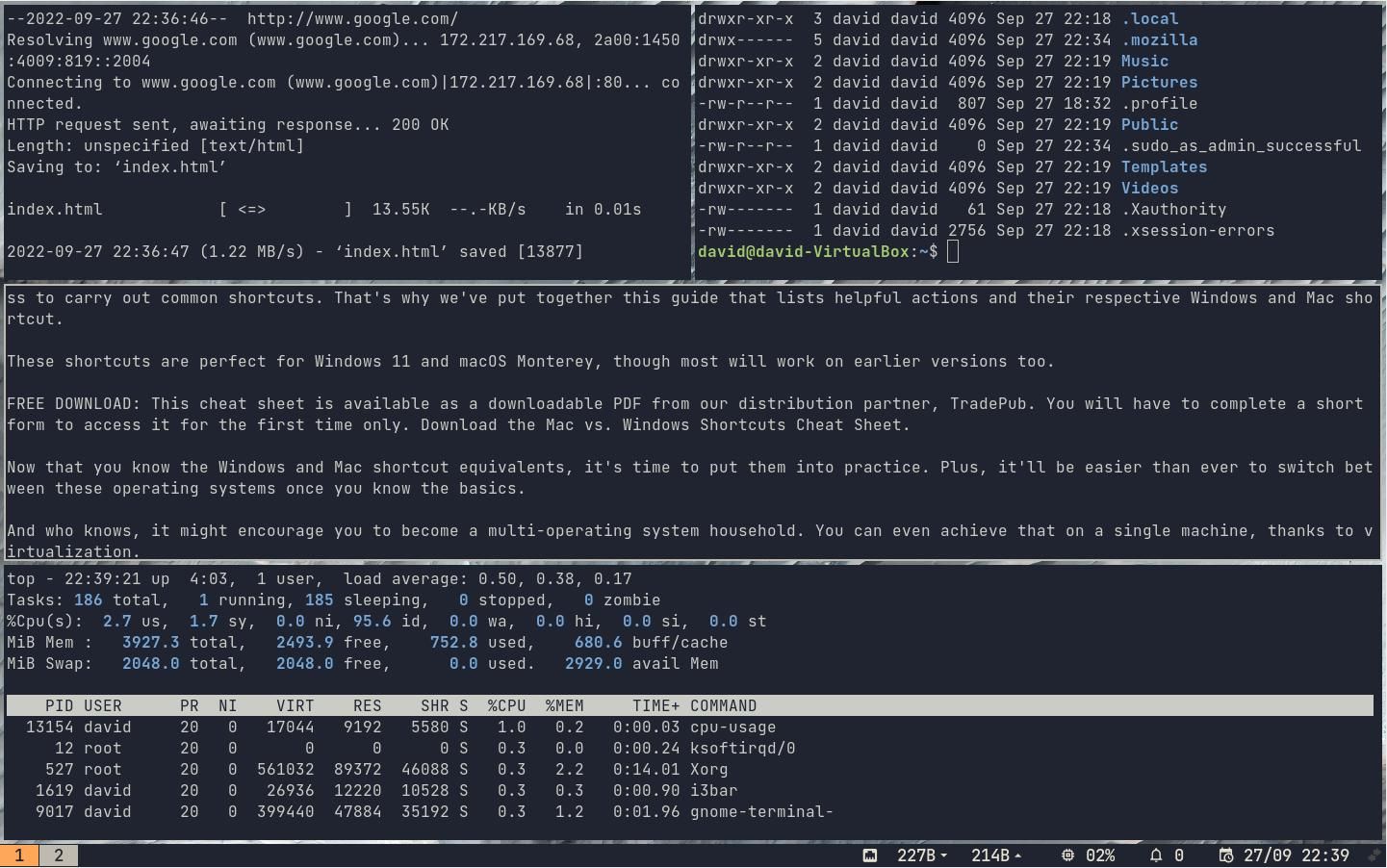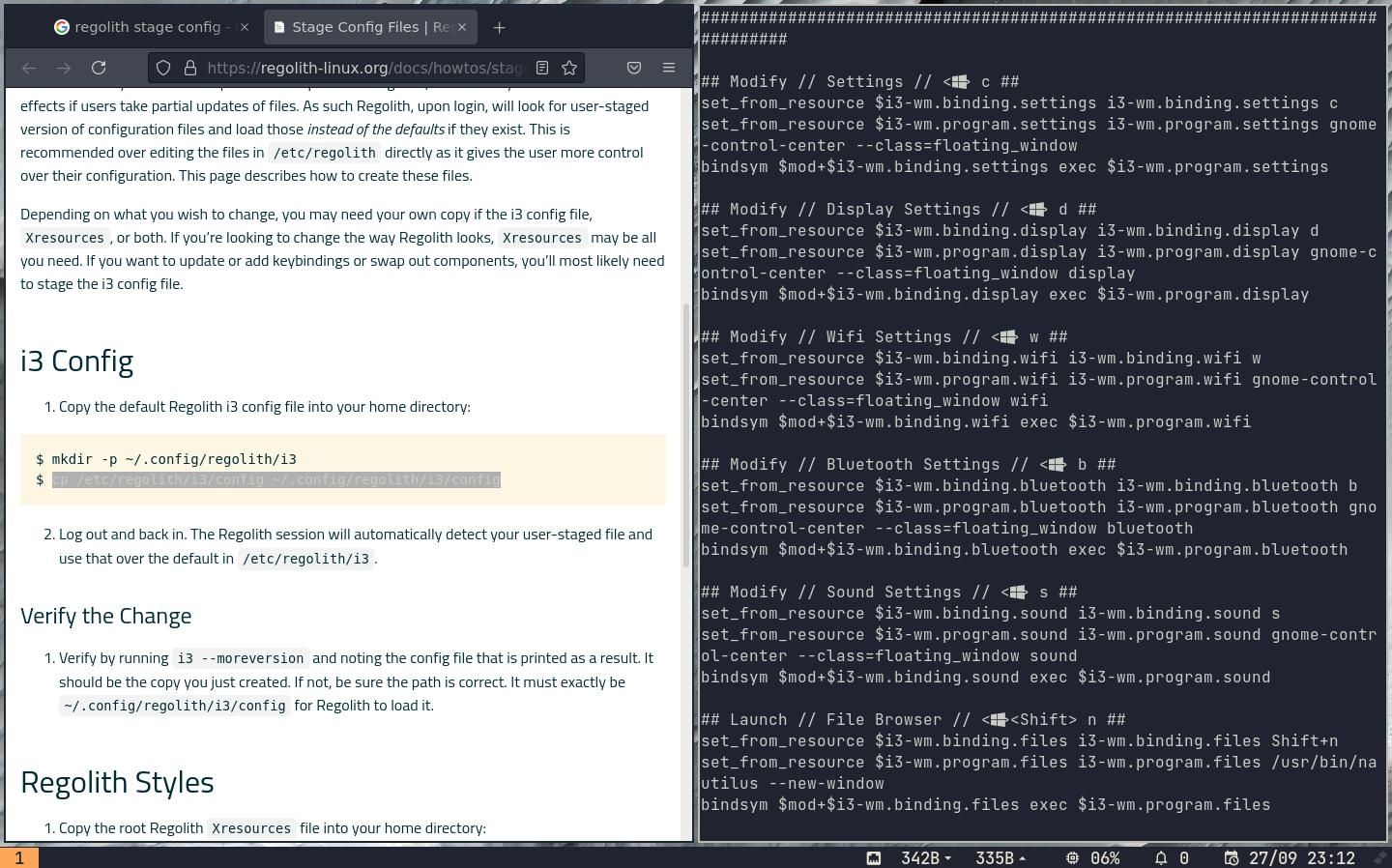[ad_1]
All of the cool children use tiling window managers as of late, however the studying curve could be steep for some. Regolith Desktop makes use of GNOME Session Supervisor and i3 to make climbing extra manageable.
This is all the things it is advisable learn about regolith.
What Is a Tiling Window Supervisor Anyway?
Most house computer systems include a desktop surroundings. These favor the usage of icons, home windows, movable home windows, and graphical interfaces (GUIs).
Advocates of TWM see DE as a trivial waste of sources and detrimental to productiveness. TWM prefers lean aesthetics, terminal use, and, the place potential, eschews the mouse in favor of keyboard-powered navigation. Home windows are tiled and could be rapidly rearranged to maximise productiveness.
TWM usually requires numerous configuration to be usable – both by way of enhancing a config file or including the supply code itself to create one thing that displays your character and works for you. is beneficial.
Whereas the outcomes of a well-configured TWM could be surprisingly lovely and enable you to with the duty at hand, getting began could be daunting. A default i3 set up, for instance, gives you a keyboard shortcut to open Terminal—and that is it. There is not any apparent option to open apps, notifications do not present up, and performance keys will not work. You’ll have to do the remainder of the work your self.
When you do not fancy going up the steep slope of configuring a window supervisor from scratch, Regolith is right here to assist.
What’s regolith, and why would you like it?
Regolith is an open-source mission that comes as a desktop to deploy on high of an current Debian or Ubuntu set up, and as a full distro which you could set up from a USB. It’s price noting that whereas you may also set up Regolith Desktop on methods with Ubuntu 20.04 or 22.04, the complete Regolith Linux distro comes with 21.04 as its base.
The premise of Regolith is straightforward – it affords an i3 TWM surroundings, with wise defaults that work out of the field. You may get began immediately, and know what you are doing, due to Conky which reveals widespread actions and default key bindings for apps.
Moreover, Regolith comes with GNOME system administration, which signifies that as a substitute of getting slowed down in configuring system recordsdata in Terminal, you should use the GNOME menu to arrange your surroundings.
Which means that as a substitute of defining the wallpaper in a config file or utilizing an app like Nitrogen, you possibly can open the GNOME settings menu and set it there as a substitute.
As a substitute of popping up the terminal and typing:
xrandr -s 1920x1080…To set your display screen decision, merely press the important thing combo to open Settings and choose from the drop-down record of accessible show resolutions.
Each of those options let you get probably the most out of the i3 with out ever getting misplaced, overwhelmed, or spending extreme time studying the official Regolith documentation (although the documentation is superb).
The best way to Get Regolith Linux or Regolith Desktop
To get Regolith Linux distro on Ubuntu 21.04 Base, obtain the ISO file, and comply with our directions to put in Linux on any PC or Laptop computer.
obtain: Regolith Linux
If you have already got Ubuntu 22.04 system, first register Regolith public key:
wget -qO - https:Add repository URL:
echo deb "[arch=amd64 signed-by=/usr/share/keyrings/regolith-archive-keyring.gpg] https://regolith-desktop.org/launch-ubuntu-jammy-amd64 jammy principal" | sudo tee /and so on/apt/sources.record.d/regolith.recordIf you’re utilizing ARM64 base – equivalent to on Raspberry Pi, as a substitute of AMD64, change “ARM64” within the above command.
Replace, then set up Regolith:
sudo apt replace
sudo apt set up regolith-desktop
sudo apt improveNow all you must do is reboot into your Regolith desktop!
Attending to grips with Regolith
The very first thing you will discover when booting into Regolith is the stark, lunar wallpaper, and a whole absence of desktop icons, begin menus, or buttons of any variety. Don’t fret—take a deep breath and look to the precise aspect of the display screen, the place you will discover an simply expandable record of keyboard shortcuts.
Regolith makes use of Rofi Launcher by default, and to entry it, hit Excellent (normally Home windows key) + area, You will notice an inventory of put in packages, navigate utilizing the arrow keys, and hit enter on what you wish to launch.
As you’d count on, a lot of the work in a TWM is completed within the terminal, with the pop one open. Ctrl + Return, Even higher, you possibly can pop as many as you need—they’re going to be tiled mechanically, which implies you may get to work nearly instantly.
It is simple sufficient to get used to, and earlier than it, you will utterly neglect to make use of the mouse.
For the GNOME Settings menu, hit Ctrl + CAnd from there, you’ll set the wallpaper and display screen decision, configure your Wi-Fi connection, arrange Bluetooth gadgets, and extra.
You may discover that there isn’t a window icon to shut or reduce home windows—use Tremendous + Shift + Q moderately than. If you wish to do one thing totally different however do not wish to shut it, transfer the offending object to a distinct workspace Tremendous + Shift + 1-0,
Regolith Primary Configuration
When you’re extra at house with Regolith, can confidently launch applications, and navigate like a champ between workspace and Tile terminals, you will most likely wish to create your personal key binding configurations. want to change. Earlier than doing this, it is advisable copy the related recordsdata to a brand new listing in your house listing. That is known as configuration staging.
mkdir ~/.config/regolith/i3
cp /and so on/regolith/i3/config ~/.config/regolith/i3/configSign off after which log again in, and Regolith will detect and use it.
You should utilize nano to make modifications to your native regolith conf:
nano ~/.config/regolith/i3/config
Be sure you learn by way of the present entries to get an summary of what they do. Bear in mind, if you happen to mess it up, you possibly can merely copy the supply file over and begin over once more with none everlasting harm.
While you’re completely happy together with your modifications, hit Ctrl + O Then Ctrl + X To exit nano.
Regolith Makes It Simpler To Run Tiling Window Managers On Linux
Most individuals favor desktop environments over tiling window managers as a result of they’re simpler to make use of and do not require (or permit) numerous tweaking. Regolith offers you the complete TWM expertise with out the frustration that normally accompanies a radically totally different interface. If Regolith is not to your style, there are dozens of different Linux distros on the market so that you can attempt.
[ad_2]
Supply hyperlink
